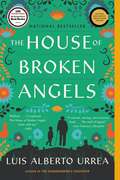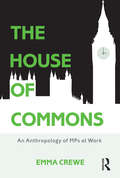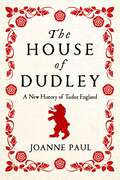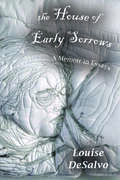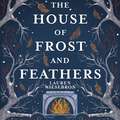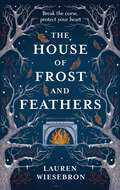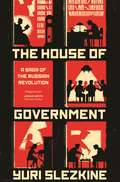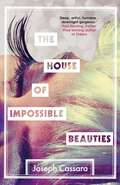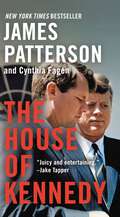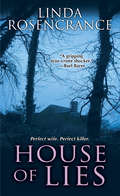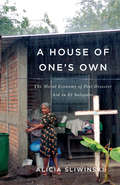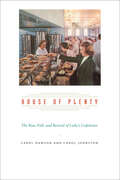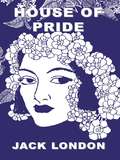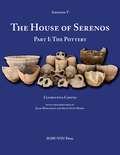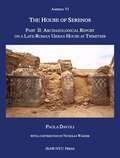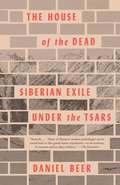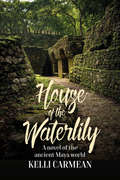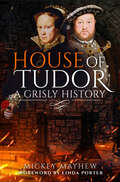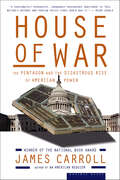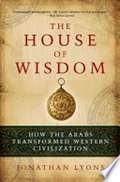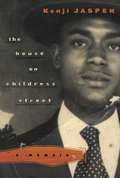- Table View
- List View
House Life: Space, Place and Family in Europe
by Donna Birdwell-Pheasant Denise Lawrence-ZúñigaThis book, which fills a gap on the materiality of lived relations, examines households within the context of their immediate physical surroundings of home and shows how human interactions are reflected in built forms. Houses are dynamic participants in family life in many ways. They often pre-date the origins and outlast the life spans of their inhabitants, but they can exert a powerful influence on the organization of behaviors and the values of family members, as well as on the forms and flows of family life across the generations. Constituting wealth, investment, security and inheritance, they are an objective in and of themselves in many domestic strategies. Drawing on developments within anthropology, archaeology, architecture and social history, the authors demonstrate, through detailed case studies, how household or family relations can usefully be mined to re-situate social theory in both space and time. Space, boundaries, family cycles, historic changes, migration patterns, ethnicity, memory and gender are all interrogated for the light they shed on how people interact with the physical world around them and what this means culturally and symbolically. Europe is an especially rich focus for this kind of analysis because it is distinguished by its long, well-documented history and a recent period of intense change.
The House of Broken Angels
by Luis Alberto UrreaIn his final days, beloved and ailing patriarch Miguel Angel de La Cruz, affectionately called Big Angel, has summoned his entire clan for one last legendary birthday party. But as the party approaches, his mother, nearly one hundred, dies, transforming the weekend into a farewell doubleheader. Among the guests is Big Angel's half brother, known as Little Angel, who must reckon with the truth that although he shares a father with his siblings, he has not, as a half gringo, shared a life. <p><p> Across two bittersweet days in their San Diego neighborhood, the revelers mingle among the palm trees and cacti, celebrating the lives of Big Angel and his mother, and recounting the many inspiring tales that have passed into family lore, the acts both ordinary and heroic that brought these citizens to a fraught and sublime country and allowed them to flourish in the land they have come to call home. <p> Teeming with brilliance and humor, authentic at every turn, The House of Broken Angels is Luis Alberto Urrea at his best, and cements his reputation as a storyteller of the first rank.
The House of Commons: An Anthropology of MPs at Work
by Emma CreweThe House of Commons is one of Britain's mysterious institutions: constantly in the news yet always opaque. In this ground-breaking anthropological study of the world’s most famous parliament, Emma Crewe reveals the hidden mechanisms of parliamentary democracy.Examining the work of Members of Parliament – including neglected areas such as constituencies and committees – this book provides unique insights into the actual lives and working relationships of parliamentarians. 'Why do the public loathe politicians but often love their own MP?' the author asks. The antagonistic façade of politics irritates the public who tend to be unaware that, backstage, democracy relies on MPs consulting, compromising and cooperating across political parties far more than is publicly admitted. As the book shows, this is only one of myriad contradictions in the labyrinths of power. Based on unprecedented access and two years of interviews and research in the Palace of Westminster and MPs’ constituencies, The House of Commons: An Anthropology of MPs at Work challenges the existing scholarship on political institutions and party politics. Moving beyond the narrow confines of rational choice theory and new institutionalism, Emma Crewe presents a radical alternative to the study of British politics by demonstrating that all of its processes hinge on culture, ritual and social relations. A must-read for anyone interested in political anthropology, politics, or the Westminster model.
The House of Condulmer: The Rise and Decline of a Venetian Family in the Century of the Black Death (The Middle Ages Series)
by Alan M. StahlHow a lower patrician Venetian family strove for status and wealth over the course of the fourteenth and early fifteenth centuriesThe House of Condulmer tells the story of a lower patrician Venetian family in the wake of the Black Death, as they strove for status and wealth over the course of the fourteenth and early fifteenth centuries. The Condulmers experienced mixed fortunes in their efforts at social mobility. Exiled after their participation in a failed revolt against the Venetian state, they nevertheless managed to accrue a great deal of wealth in the period before the Black Death. In the aftermath of the plague, which ravaged Venice and wiped out many lines of the family, the fortune of the Condulmers was concentrated in two main branches, whose members are the subject of this book.Through original research drawing on hundreds of unpublished archival sources, Alan M. Stahl traces the careers and changing personal circumstances of five members of the Condulmer family: Jacobello, who used his civic participation and donations to achieve noble status for himself and his descendants but impoverished himself and his family in the process; Vielmo, a moneychanger who paraded around in the trappings of wealth, attempting to imitate the appearance of his noble cousins; Franceschina, who used her power over dowries to get noble husbands for her daughters and stepdaughters; Simoneto, who achieved great wealth through Mediterranean commerce but lost it in the crash of the bank in which he was a partner; and Gabriele, who would eventually become one of the most consequential and reviled popes of the Renaissance, Eugene IV.The House of Condulmer brings readers into the world of intrigue, finance, religion, and plague in medieval Venice, capturing the vicissitudes of life in the one of the wealthiest cities of the world on the eve of the Renaissance.
The House of Dudley: A New History of the Tudor Era
by Joanne PaulThe shocking and extraordinary story of the most-conniving, manipulative Tudor family you've never heard of—the dashing and daring House of Dudley.Each Tudor monarch made their name with a Dudley by their side—or by crushing one beneath their feet. The Dudleys thrived at the court of Henry VII, but were sacrificed to the popularity of Henry VIII. Rising to prominence in the reign of Edward VI, the Dudleys lost it all by advancing Jane Grey to the throne over Mary I. That was until the reign of Elizabeth I, when the family was once again at the center of power, and would do anything to remain there. . . . With three generations of felled favorites, what was it that caused this family to keep rising so high and falling so low? Here, for the first time, is the story of England's Borgias, a noble house competing in a murderous game for the English throne. Witness cunning, adultery, and sheer audacity from history's most brilliant, bold, and deceitful family. Welcome to the House of Dudley.
The House of Early Sorrows: A Memoir in Essays
by Louise DeSalvoWINNER OF THE IASA BOOK AWARD!AMERICAN BOOK AWARD WINNER!As the child of children of immigrants, Louise DeSalvo was at first reluctant to write about her truths. Her abusive father, her sister’s suicide, her illness. In this stunning collection of her captivating and frank essays on her life and her Italian-American culture, Louise DeSalvo centers on her beginnings, reframing and revising her acclaimed memoiristic essays, pieces that were the seeds of longer collections, to reveal her true power as a memoirist: the ability to dig ever deeper for personal and political truths that illuminate what it means to be a woman, a second-generation American, a writer, and a scholar. Each essay is driven by a complex inquiry that examines the personal, familial, social, ethnic, and historical dimensions of identity. Collectively, they constitute a story significantly different from DeSalvo’s memoirs when they first published, where the starkness of their meaning became blunted by material surrounding them. DeSalvo has also restored material written and then deleted—experiences she was too reticent to reveal before, in writing about her sister’s suicide, her husband’s adultery, her own sexual assault. The essays also include new material to shift the ballast of an essay as her life has changed significantly through the years. The House of Early Sorrows is a courageous exploration not only of the DeSalvo’s family life and times, but also of our own.
The House of Frost and Feathers: A sweeping Slavic fantasy fairy tale bursting with magic
by Lauren WiesebronTHE WORLD TEETERS ON THE EDGE OF ETERNAL SLUMBER . . .Marisha's time is running out. She's already lost her family to the sleeping plague, and she fears she'll be next. Penniless and desperate for protection, Marisha is forced to accept a job as apprentice to the notorious koldunya, Baba Zima. Despite Baba Zima's reputation for cruelty, Marisha finds herself drawn into the magical world of koldunry, and is thrust into looking for a cure to the plague - if Marisha finds it, she will finally be free.As the search grows increasingly dangerous and seemingly impossible, Marisha uncovers hidden connections between the sleeping plague, her own family's history, and her haunting dreams: of a masked ball where sleepers are trapped endlessly dancing - and a monstrous beaked man who shadows her every step . . .
The House of Frost and Feathers: A sweeping Slavic fantasy fairy tale bursting with magic
by Lauren WiesebronTHE WORLD TEETERS ON THE EDGE OF ETERNAL SLUMBER . . .Marisha's time is running out. She's already lost her family to the sleeping plague, and she fears she'll be next. Penniless and desperate for protection, Marisha is forced to accept a job as apprentice to the notorious koldunya, Baba Zima. Despite Baba Zima's reputation for cruelty, Marisha finds herself drawn into the magical world of koldunry, and is thrust into looking for a cure to the plague - if Marisha finds it, she will finally be free.As the search grows increasingly dangerous and seemingly impossible, Marisha uncovers hidden connections between the sleeping plague, her own family's history, and her haunting dreams: of a masked ball where sleepers are trapped endlessly dancing - and a monstrous beaked man who shadows her every step . . .
The House of Government: A Saga of the Russian Revolution
by Yuri SlezkineOn the 100th anniversary of the Russian Revolution, the epic story of an enormous apartment building where Communist true believers lived before their destructionThe House of Government is unlike any other book about the Russian Revolution and the Soviet experiment. Written in the tradition of Tolstoy's War and Peace, Grossman’s Life and Fate, and Solzhenitsyn’s The Gulag Archipelago, Yuri Slezkine’s gripping narrative tells the true story of the residents of an enormous Moscow apartment building where top Communist officials and their families lived before they were destroyed in Stalin’s purges. A vivid account of the personal and public lives of Bolshevik true believers, the book begins with their conversion to Communism and ends with their children’s loss of faith and the fall of the Soviet Union. Completed in 1931, the House of Government, later known as the House on the Embankment, was located across the Moscow River from the Kremlin. The largest residential building in Europe, it combined 505 furnished apartments with public spaces that included everything from a movie theater and a library to a tennis court and a shooting range. Slezkine tells the chilling story of how the building’s residents lived in their apartments and ruled the Soviet state until some eight hundred of them were evicted from the House and led, one by one, to prison or their deaths. Drawing on letters, diaries, and interviews, and featuring hundreds of rare photographs, The House of Government weaves together biography, literary criticism, architectural history, and fascinating new theories of revolutions, millennial prophecies, and reigns of terror. The result is an unforgettable human saga of a building that, like the Soviet Union itself, became a haunted house, forever disturbed by the ghosts of the disappeared.
The House of Impossible Beauties: 'Equal parts attitude, intelligence and eyeliner.' - Marlon James
by Joseph CassaraNAMED A MOST ANTICIPATED BOOK OF 2018 BY Buzzfeed • Esquire • Bustle • The Millions • The Wall Street Journal • Entertainment Weekly • Nylon • Elle • Dazed • The Irish Times 'Cassara has written a heartbreaking tale of gay men struggling to survive in a world of clubbing and drugs. It is also an unexpected love story.' Graham Norton, Top Five Reads of 2018 'Cassaras&’s propulsive and profound first novel, finding one&’s home in the world – particularly in a subculture plagued by fear and intolerance from society – comes with tragedy as well as extraordinary personal freedom.' Esquire A gritty and gorgeous debut inspired by the real House of Xtravaganza made famous by the seminal documentary Paris Is Burning New York City, 1980 Nowhere is the city's glamour and energy better reflected than in the burgeoning Harlem dance scene. Angel Just seventeen years old and burnt by her traumatic past, she wants to create a family for those without. Hector When Angel falls in love with him, the two decide to set up the House of Xtravaganza, the first ever all-Latino house on the dance circuit. The Xtravaganzas They are joined by Venus, Juanito and Daniel, all with their own devastating stories to tell, each determined to survive. Told in a voice that brims with wit, rage, tenderness, and fierce yearning, The House of Impossible Beauties is a gritty and gorgeous debut - a tragic story of love, family, and the dynamism of the human spirit.
The House of Kennedy
by James PattersonThe Kennedys have always been a family of charismatic adventurers, raised to take risks and excel, living by the dual family mottos: "To whom much is given, much is expected" and "Win at all costs." And they do--but at a price. Across decades and generations, the Kennedys have occupied a unique place in the American imagination: charmed, cursed, at once familiar and unknowable. The House of Kennedy is a revealing, fascinating account of America's most storied family, as told by America's most trusted storyteller.
House of Lies
by Linda RosencranceKiller DebutanteKelley Cannon was living the American Dream. The former prom queen had three beautiful children with her successful, handsome husband, Jim, and an elegant home in well-to-do Nashville. But when their housekeeper found Jim murdered, strangled to death as their children slept, the fairytale collapsed. Behind the facade, Kelley's glamorous lifestyle was being torn apart by infidelity, alcohol, and drug abuse. When she went from prime suspect to accused, a jury had to decide--How could a 90-pound woman overpower a grown man to death? Their finding: premeditated murder, a life sentence--and a storybook life that masked a dark, violent truth . . . What caused petite, pretty Kelley Cannon to snap? Find out in this page-turning account of a woman who killed her husband. --Burl Barer, Edgar Award-winning Author of Body Count and Head ShotA gripping true-crime shocker. --Burl BarerCase seen on Dateline Includes 16 Pages Of Photos
A House of One's Own: The Moral Economy of Post-Disaster Aid in El Salvador
by Alicia SliwinskiWhat happens to people after an earthquake destroys their homes? What is daily life like under a humanitarian regime? Is aid a gift or is it a form of power? A House of One’s Own explores these enduring questions as they unfold in a Salvadoran town in the aftermath of the 2001 earthquakes. In a lively, intimate account of the social complexities that arise in post-disaster settings, Alicia Sliwinski recounts the trajectories of fifty families who received different forms of humanitarian aid, from emergency assistance to housing reconstruction. Drawing on seminal anthropological theories about gift giving and moral economy, the author thoughtfully discusses the complications and challenges of humanitarian action that aims to rebuild communities through participation. At the crossroads of disaster studies and the anthropology of humanitarianism, the book’s insights speak to timely and recurring issues that relocated populations face in regimented and morally charged resettlement initiatives. A richly textured, analytically nuanced ethnography, A House of One’s Own is a perceptive firsthand account of what happens on the ground in a post-disaster setting.
House of Plenty: The Rise, Fall, and Revival of Luby's Cafeterias
by Carol Dawson Carol JohnstonScarred by the deaths of his mother and sisters and the failure of his father’s business, a young man dreamed of making enough money to retire early and retreat into the secure world that his childhood tragedies had torn from him. But Harry Luby refused to be a robber baron. Turning totally against the tide of avaricious capitalism, he determined to make a fortune by doing good. Starting with that unlikely, even naive, ambition in 1911, Harry Luby founded a cafeteria empire that by the 1980s had revenues second only to McDonald’s. So successfully did Luby and his heirs satisfy the tastes of America that Luby’s became the country’s largest cafeteria chain, creating more millionaires per capita among its employees than any other corporation of its size. Even more surprising, the company stayed true to Harry Luby’s vision for eight decades, making money by treating its customers and employees exceptionally well. Written with the sweep and drama of a novel, House of Plenty tells the engrossing story of Luby’s founding and phenomenal growth, its long run as America’s favorite family restaurant during the post–World War II decades, its financial failure during the greed-driven 1990s when non-family leadership jettisoned the company’s proven business model, and its recent struggle back to solvency. Carol Dawson and Carol Johnston draw on insider stories and company records to recapture the forces that propelled the company to its greatest heights, including its unprecedented practices of allowing store managers to keep 40 percent of net profits and issuing stock to all employees, which allowed thousands of Luby’s workers to achieve the American dream of honestly earned prosperity. The authors also plumb the depths of the Luby’s drama, including a hushed-up theft that split the family for decades; the 1991 mass shooting at the Killeen Luby’s, which splattered the company’s good name across headlines nationwide; and the rapacious over-expansion that more than doubled the company’s size in nine years (1987–1996), pushed it into bankruptcy, and drove president and CEO John Edward Curtis Jr. to violent suicide. Disproving F. Scott Fitzgerald’s adage that “there are no second acts in American lives,” House of Plenty tells the epic story of an iconic American institution that has risen, fallen, and found redemption—with no curtain call in sight.
A House of Prayer for All People: Contesting Citizenship in a Queer Church
by David K. SeitzPerhaps an unlikely subject for an ethnographic case study, the Metropolitan Community Church of Toronto in Canada is a large predominantly LGBT church with a robust, and at times fraught, history of advocacy. While the church is often riddled with fault lines and contradictions, its queer and faith-based emphasis on shared vulnerability leads it to engage in radical solidarity with asylum-seekers, pointing to the work of affect in radical, coalition politics. A House of Prayer for All People maps the affective dimensions of the politics of citizenship at this church. For nearly three years, David K. Seitz regularly attended services at MCCT. He paid special attention to how community and citizenship are formed in a primarily queer Christian organization, focusing on four contemporary struggles: debates on race and gender in religious leadership, activism around police–minority relations, outreach to LGBT Christians transnationally, and advocacy for asylum seekers. Engaging in debates in cultural geography, queer of color critique, psychoanalysis, and affect theory, A House of Prayer for All People stages innovative, reparative encounters with citizenship and religion. Building on queer theory&’s rich history of &“subjectless&” critique, Seitz calls for an &“improper&” queer citizenship—one that refuses liberal identity politics or national territory as the ethical horizon for sympathy, solidarity, rights, redistribution, or intimacy. Improper queer citizenship, he suggests, depends not only on &“good politics&” but also on people&’s capacity for empathy, integration, and repair.
House Of Pride
by LondonPublished in the year 2001, House of Pride is a valuable contribution to the field of Asian Studies.
The House of Serenos, Part I: The Pottery (Amheida V) (ISAW Monographs #10)
by Clementina CaputoA comprehensive archaeological study of the ceramic finds from a house in AmheidaThe House of Serenos: Part I: The Pottery (Amheida V) is a comprehensive full-color catalog and analysis of the ceramic finds from the late antique house of a local notable and adjacent streets in Amheida. It is the fifth book in the Amheida series.Amheida is located in the western part of the Dakhla oasis, 3.5 km south of the medieval town of El-Qasr. Known in Hellenistic and Roman times as Trimithis, Amheida became a polis by 304 CE and was a major administrative center of the western part of the oasis for the whole of the fourth century. The home’s owner was one Serenos, a member of the municipal elite and a Trimithis city councillor, as we know from documents found in the house. His house is particularly well preserved with respect to floor plan, relationship to the contemporary urban topography, and decoration, including domestic display spaces plastered and painted with subjects drawn from Greek mythology and scenes depicting the family that owned the house. The archaeology from the site also reveals the ways in which the urban space changed over time, as Serenos’s house was built over and expanded into some previously public spaces. The house was probably abandoned around or soon after 370 CE. The pottery analyzed in this volume helps to refine the relationship of the archaeological layers belonging to the élite house and the layers below it; it also sheds light on the domestic and economic life of the household and region, from cooking and dining to the management of a complex agricultural economy in which ceramics were the most common form of container for basic commodities. The book will be of interest to specialists interested in ceramology, Roman Egypt, and the material culture, social history, and economy of late antiquity.
The House of Serenos, Part II: Archaeological Report on a Late-Roman Urban House at Trimithis (Amheida VI) (ISAW Monographs #15)
by Paola DavoliA comprehensive study of the archaeology of the House of SerenosThe House of Serenos, Part II is the second of four books devoted to publishing the archaeology of the House of Serenos, a richly decorated, late antique villa of a local élite, located in Amheida (ancient Trimithis) in the Dakhla Oasis of Egypt. The House of Serenos, Part II synthesizes the archaeological information presented in detail in other volumes in a comprehensive study of the architectural and archaeological history of the house and its relationship to its natural and built environments, from construction through expansion and renovation to its eventual abandonment around the end of the fourth century. The volume includes discussions of archaeological method, stratigraphy, architecture, and the archaeological assemblages discovered in the House of Serenos—and reveals what all this can tell us about the inhabitants and their experience living in this high-status residence at the edge of the Roman Empire.
The House of the Dead: Siberian Exile Under the Tsars
by Daniel BeerA visceral, hundred-year history of the vast Russian penal colony. It was known as 'the vast prison without a roof.' From the beginning of the nineteenth century until the Russian Revolution, the tsars exiled more than one million prisoners and their families beyond the Ural Mountains to Siberia. Daniel Beer illuminates both the brutal realities of this inhuman system and the tragic and inspiring fates of those who endured it. Here are the vividly told stories of petty criminals and mass murderers, bookish radicals and violent terrorists, fugitives and bounty hunters, and the innocent women and children who followed their husbands and fathers into exile. Siberia was intended to serve not only as a dumping ground for criminals but also as a colony. Just as exile would purge Russia of its villains so too would it purge villains of their vices. In theory, Russia’s most unruly criminals would be transformed into hardy frontiersmen and settlers. But in reality, the system peopled Siberia with an army of destitute and desperate vagabonds who visited a plague of crime on the indigenous population. Even the aim of securing law and order in the rest of the Empire met with disaster: Expecting Siberia also to provide the ultimate quarantine against rebellion, the tsars condemned generations of republicans, nationalists and socialists to oblivion thousands of kilometers from Moscow. Over the nineteenth century, however, these political exiles transformed Siberia's mines, settlements and penal forts into a virtual laboratory of revolution. Exile became the defining experience for the men and women who would one day rule the Soviet Union. Unearthing a treasure trove of new archival evidence, this masterly and original work tells the epic story of Russia's struggle to govern its prison continent and Siberia's own decisive influence on the political forces of the modern world. In The House of the Dead, Daniel Beer brings to light a dark and gripping reality of mythic proportions.From the Hardcover edition.
The House of the Mother: The Social Roles of Maternal Kin in Biblical Hebrew Narrative and Poetry
by Prof. Cynthia R. ChapmanA novel approach to Israelite kinship, arguing that maternal kinship bonds played key social, economic, and political roles for a son who aspired to inherit his father's household Upending traditional scholarship on patrilineal genealogy, Cynthia Chapman draws on twenty years of research to uncover an underappreciated yet socially significant kinship unit in the Bible: "the house of the mother. " In households where a man had two or more wives, siblings born to the same mother worked to promote and protect one another's interests. Revealing the hierarchies of the maternal houses and political divisions within the national house of Israel, this book provides us with a nuanced understanding of domestic and political life in ancient Israel.
House of the Waterlily: A Novel of the Ancient Maya World
by Kelli CarmeanSet in the Maya civilization's Late Classic Period House of the Waterlily is a historical novel centered on Lady Winik, a young Maya royal. Through tribulations that mirror the political calamities of the Late Classic world, Winik's personal story immerses the reader not only in her daily life, but also in the difficult decisions Maya men and women must have faced as they tried to navigate a rapidly changing world. Kelli Carmean's novel brings to life a people and an era remote from our own, yet recognizably human all the same.
House of Tudor: A Grisly History
by Mickey MayhewForty-five gruesome but not gratuitous accounts from the Tudor reign, including the death of Richard III and the botched execution of Mary Queen of Scots. This decidedly darker take on the Tudors, from 1485 to 1603, covers a whole host of horrors from the Tudor reign. Particular attention is paid to the various gruesome ways in which the Tudors despatched their various villains and lawbreakers, from simple beheadings, to burnings and of course the dreaded hanging, drawing and quartering. Other chapters cover the various diseases prevalent during Tudor times, including the dreaded &“Sweating Sickness&”—rather topical at the moment, unfortunately—as well as the cures for these sicknesses, some of which were considered worse than the actual disease itself. The day-to-day living conditions of the general populace are also examined, as well as various social taboos and the punishments that accompanied them, i.e. the stocks, as well as punishment by exile. Tudor England was not a nice place to live by twenty-first-century standards, but the book will also serve to explain how it was still nevertheless a familiar home to our ancestors. &“He does not shy away from the gory details, which adds another element to stories that are familiar to those who are Tudor fans. If you want something spooky to read in October or know more about the darker side of Tudor history, I recommend reading House of Tudor.&” —Adventures of a Tudor Nerd &“It really does cover so many different things that there will be something for everyone whatever your interests are; political, personal, medical, or death. A brilliant gory discourse on my favourite period of history!&” —Tudor Blogger
House of War: The Pentagon and the Disastrous Rise of American Power
by James Carroll"A masterful achievement...[Carroll's] prose is elegant, his viewpoint bold." —Howard Zinn, author of The People's History of the United States"One cannot understand the impact of the Pentagon on US foreign policy. . . without reading James Carroll's House of War." —Lawrence Korb, former Undersecretary of Defence under Ronald ReaganFrom the National Book Award–winning author of An American Requiem and Constantine's Sword comes a sweeping yet intimate look at the Pentagon and its vast—often hidden—impact on America.This landmark, myth-shattering work chronicles the most powerful institution in America, the people who created it, and the pathologies it has spawned. James Carroll proves a controversial thesis: the Pentagon has, since its founding, operated beyond the control of any force in government or society. It is the biggest, loosest cannon in American history, and no institution has changed this country more. To argue his case, he marshals a trove of often chilling evidence. He recounts how "the Building" and its denizens achieved what Eisenhower called "a disastrous rise of misplaced power"—from the unprecedented aerial bombing of Germany and Japan during World War II to the "shock and awe" of Iraq. He charts the colossal U.S. nuclear buildup, which far outpaced that of the USSR, and has outlived it. He reveals how consistently the Building has found new enemies just as old threats—and funding—evaporate. He demonstrates how Pentagon policy brought about U.S. indifference to an epidemic of genocide during the 1990s. And he shows how the forces that attacked the Pentagon on 9/11 were set in motion exactly sixty years earlier, on September 11, 1941, when ground was broken for the house of war.Carroll draws on rich personal experience (his father was a top Pentagon official for more than twenty years) as well as exhaustive research and dozens of extensive interviews with Washington insiders. The result is a grand yet intimate work of history, unashamedly polemical and personal but unerringly factual. With a breadth and focus that no other book could muster, it explains what America has become over the past sixty years.
The House Of Wisdom: How The Arabs Transformed Western Civilization
by Jonathan LyonsFor centuries following the fall of Rome, Western Europe was a benighted backwater, a world of subsistence farming, minimal literacy, and violent conflict. Meanwhile Arab culture was thriving, dazzling those Europeans fortunate enough to visit cities like Baghdad or Antioch. There, philosophers, mathematicians, and astronomers were steadily advancing the frontiers of knowledge, as well as keeping alive the works of Plato and Aristotle. When the best libraries in Europe held several dozen books, Baghdad's great library, The House of Wisdom, housed four hundred thousand. Jonathan Lyons shows just how much "Western" ideas owe to the Golden Age of Arab civilization. Even while their countrymen waged bloody Crusades against Muslims, a handful of intrepid Christian scholars, hungry for knowledge, traveled East and returned with priceless jewels of science, medicine, and philosophy that laid the foundation for the Renaissance. In this brilliant, evocative book Jonathan Lyons reveals the story of how Europe drank from the well of Muslim learning.
The House on Childress Street: A Memoir
by Kenji JasperIn this vivid and piercing memoir of his grandfather, noted novelist Kenji Jasper captures the story of his family and sheds a keen light on the urban and rural experiences of Black America. Author Kenji Jasper only knew his maternal grandfather, Jesse Langley Sr. , as a quiet man who smoked too many cigarettes, drank too much liquor and quoted the Bible like it was the only book he'd ever laid eyes on. Jesse's children rarely hugged him, and his nearly sixty years of marriage to Sally seemed cold and complicated. But when the man who declared himself "The Lone Ranger" passed away in late 2002, Kenji began a long and life-changing journey to learn more about the grandfather he barely knew. From the streets of his native Washington, D. C. , to rural Virginia, North Carolina, and his home in Brooklyn, Jasper's journey to find the truth leads him through three generations of stories, through tales of love and loss, loyalty and betrayal, addiction and redemption. The House on Childress Street examines life, love, and survival through the eyes of one little family on one little block that somehow manages to speak for us all. From the Trade Paperback edition.

